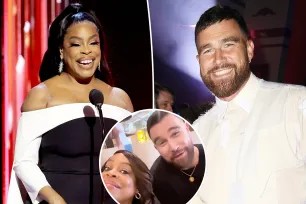In 2002, when Snehil Dixit Mehra was in Kota, Rajasthan, preparing for IIT, Sanjay Leela Bhansali’s magnum opus Devdas hit the big screen. The Shah Rukh Khan-Aishwarya Rai-Madhuri Dixit starrer drama swept her off her feet. Snehil watched it multiple times as she was drawn into Bhansali’s “cinematic world” of grandeur, beauty, detailing, costume and storytelling; unaware that 20 years later, she would be on the sets of his streaming debut Heeramandi, being part of his writing team and on board as an additional director on the biggest Netflix show of India.
“When I met Sanjay sir, I joked that it is because of you I couldn’t become an IITian!”Snehil Dixit Mehra tells Indianexpress.com as she sits down to chat about Heeramandi, which has become an unmissable talking point on the internet, for those who have bought into the world of Bhansali and also for those who have ripped it apart.

Heeramandi: The Diamond Bazaar, based on the courtesans of Lahore and the life of red-light district in undivided India released on May 1 and starred Manisha Koirala, Sonakshi Sinha, Aditi Rao Hydari, Richa Chaddha, Sanjeeda Sheikh and Sharmin Segal.
In an interview with Indianexpress.com, Snehil Dixit Mehra talks about how a Sanjay Leela Bhansali set functions, why the filmmaker is notoriously perfectionist, the criticism of the show that it glorifies courtesans and the unkind reception that the filmmaker’s actor niece, Sharmin, is facing post the release.
Edited excerpt:
 Snehil Dixit Mehra on Heeramandi sets.
Snehil Dixit Mehra on Heeramandi sets.
What exactly is the job of an additional director?
So, Sanjay sir is the director of the entire series. There are portions in an episode… Because it is a mammoth show with so many characters, an additional director is someone who can fill in the gaps. While sir is shooting for a big sequence, a smaller part is given to the additional director, which is under the supervision of SLB, because we are catering to his vision. We would have parallel units. So, if there is a scene with revolutionaries discussing their plans, it would come my way. There was also Mitakshara Kumar, his longtime associate, who was also an Additional Director on the show. So, our work was divided completely.
Can you give us a sense of how Sajay Leela Bhansali thinks? How is he on sets?
A film set is his happy place. He is the first one to come, the last one to leave the set. He enjoys the process of creating so much that he gives it all. He strives for perfection with everything he does and is the team leader of every department. He is a great visual director. For me, an outsider who came from TV, this felt like being in a masterclass– and getting paid for it!
What was a Sanjay Leela Bhansali set like?
It transports you to a different world because it is so grand and full of people. Anyone working with sir on sets has to be spontaneous. If he wants to rewrite something on the spot, something he isn’t feeling in the scene, then one has to be very spontaneous in giving multiple ideas, he doesn’t compromise on a single thing. His attention to detail is top notch. Like, if there is a flower vase on the table, he will think about the kind of flowers that will go in it, the colour scheme we are following that day, including the clothes of the extras on set. That is what I learnt from him. You have to find solutions, without compromising the vision.
Was it intimidating to be on set with him? Is he a hard task master?
Yes, he is a very experienced filmmaker, so it was intimidating working for him. He is very kind to his crew; he feeds us well but then demands 100 percent commitment on sets. He would feed us food from home, joke with us but one we are on the floor, then everything is about that perfect shot or that perfect scene.
How was it to handle a cast this big?
It was daunting. When these powerful women are there on your set and you are surrounded by such talent, it is obviously but daunting. But I was starstruck when I met Manisha Koirala, because I have grown up on her cinema. It was a dream come true to work with the cast. But the one actor I was absolutely in awe of was Farida Jalal; she is cuter and way more loving off screen. All these stalwarts came with a huge entourage, so all their dates and schedules had to be worked together.
A lot of actors have said how he would shoot a scene for 12 hours, have 17 takes and so on. Can you help us understand what’s the thought behind this?
As an actor, I understand, all these people had to re-do a lot of things, there were multiple takes, tiring days. There are a lot of nuanced performances and so re-taking because he is not getting the perfect dialogue. As an actor I understand this because there are times you are on set but waiting because you don’t know the real reason behind it. But there is a lot of detailing that SLB creates, he even knows what kind of lighting that scene requires, whether it is a bright sunlight day or a twilight.
For instance, he wanted twilight for a scene because these women are at the cusp of greatness or being forgotten by history. So, he wanted to convey this with imagery. Hence, the lighting took more time than expected. The scene description had just ‘day’ so we were prepping for day lighting, but when he came, he saw it differently, so we had to re-light it. I had to understand what different these little things make to a scene, and I learnt from him. So yes, actors can feel that, but there is a definite creative reason behind it.
Which scene took the longest?
It was Richa Chadha’s mujra! It had to be a gut punch when she was humiliated that way and the way she performed was glorious. It took 99 takes to the swirl at the end of the song. That took a little more time, and a lot of effort because it just had to be perfect.
How many people were on the set?
So, on an average there were 150 people for a smaller scene. But the day the Azadi song was happening or all the Heeramandi establishment shots were being taken, we had 600 people on set. Because the entire set was so big, we had to fill it with a lot of people. I remember shooting a scene one day, where I had to take the shot of a lane. The AD asked me how many extras I would need, so I said 75 people should be good. Then when Sanjay sir came and asked me about the shot, I told him 75 people were coming in. He exclaimed, ‘What?! 75!?’ I thought it was too much, so I said, ‘No no, 50 extras would also work.’ He said, ‘No, I want at least 150 extras’.
View this post on Instagram
A post shared by Netflix India (@netflix_in)
There has been a criticism about glorification of courtesans, the romanticisation of their pain. How do you look at it?
If told by any other storyteller, this story would have been different. But SLB has a history of creating characters with inherent pain, presenting them so beautifully that you fall in love with them. He is that filmmaker who tells painful stories with such panache. There is no glorification of courtesans, it is true that these women held an important position at that time. They were like queens, had a lot of money and influence. Yet, no one married them because it was looked down upon. The dichotomy was that someone so powerful and wealthy had no social status.
People have not reacted kindly to Sharmin Segal’s performance. How do you view that as a director?
People have an opinion on everything and once you are a public figure, these things are bound to happen. In today’s age it is harsher because of social media, where people can get away saying anything to anyone. Alamzeb was the only one untouched from the corruption of Heeramandi. She was not manipulative like Mallikajaan, a secret revolutionary like Bibbojaan, not full of revenge like Sonakshi’s character. Sharmin had to play her part very subtly and I think she has done a fabulous job at that.
There is a lot of love also, I have gotten calls and messages where people have praised her voice and modulation. People are either loving her or dissing her, but that is part and parcel… These things get highlighted because when you are put in a cast full of such veteran actors, you are bound to be picked upon. But genuinely, I have been getting calls about her voice and her chemistry with Tajdar, who is my favourite character. So I am getting a lot of love for both of them. There are certain people not liking the show, others are absolutely loving it, some feel it is too immersive. Once your art is out, the audience judges your work, and one has to be open for that.
Click for more updates and latest Bollywood news along with Entertainment updates. Also get latest news and top headlines from India and around the world at The Indian Express.
Disclaimer: The copyright of this article belongs to the original author. Reposting this article is solely for the purpose of information dissemination and does not constitute any investment advice. If there is any infringement, please contact us immediately. We will make corrections or deletions as necessary. Thank you.







